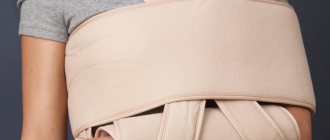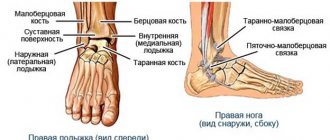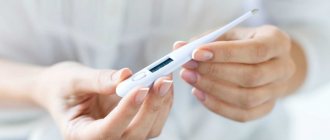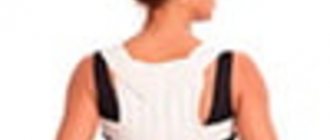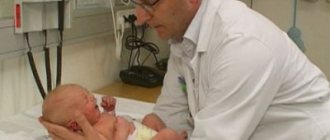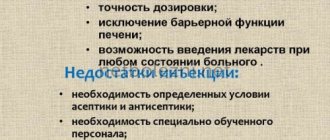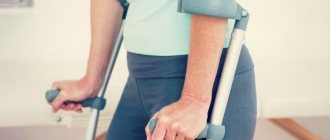The largest medical portal dedicated to damage to the human body Consultation with a doctor
Contracture is a rare but possible complication of a fracture.
The topic of this article is one of the most unpleasant complications of a previously suffered fracture of the bones of the wrist joint (articulatio radiocarpea) - contracture. Let us briefly consider the injury itself, types of treatment, reasons for the development of contracture, as well as methods for correcting this acquired deformity. More interesting information later in the article.
Contracture after a fracture of the wrist joint is not the most common, but one of the most unpleasant complications. The term “contracture” comes from the ancient Latin language and implies the inability to carry out full movements in the joint, which is caused by pathological changes in the soft tissues of the anatomical area.
- Disturbed joint anatomy
- How to classify contractures
- Particular types of damage Volkmann's contracture
- First aid
Disturbed joint anatomy
The wrist joint is a complex joint formed by many bones - the distal part of the radius (radius) and the proximal row of five carpal bones. An articular fracture of the radius near the synovial joint (in a typical place) is often called an articulatio radiocarpea fracture, as it is accompanied by loss of function of the latter.
Full movements in the joint are produced due to the coordinated work of not only bone elements, but also other units of the musculoskeletal system, namely muscles, tendons and other connective tissue structures. It is the defeat of the latter due to involvement in the trauma process that leads to contracture, and not the fracture itself.
Contracture leads to limited mobility in the joints.
Important! Both surgical and conservative treatment of an articulatio radiocarpea fracture can be complicated by the formation of contracture. It is worth remembering this in case of the formation of an undesirable complication.
It is also important to understand that immobilization in the hand can occur at any level, and not just directly in the articulatio radiocarpea area. This fact is due to the normal anatomy of the hand. Involvement in the injury of ligaments and tendons that attach close to the site of injury, but are involved in the direct movement of the fingers, will affect the functionality of the latter.
The structure of the joint.
Treatment
The only effective treatment for Dupuytren's contracture, which can lead to complete recovery, is surgery. It can be performed under local anesthesia or general anesthesia.
During the operation, the surgeon excises part of the aponeurosis and restores normal mobility of the finger(s). Treatment can be carried out with medications and physical therapy, but it is not always effective.
In the multidisciplinary CELT clinic, surgical intervention for this disease is performed by experienced traumatologists. They provide complete restoration of hand function and excellent cosmetic effect.
How to classify contractures
In fact, limitation of the range of motion in a particular joint can occur for many reasons, one of which is traumatic injury. This kind of damage can lead to the formation of both isolated and combined contracture.
Trauma, both directly and indirectly, can cause immobility at different levels of the upper limb.
Let's understand these two processes.
- Damage. Mechanical impact can be a direct cause of contracture. Connective tissue is a rather fragile structure (in the figurative sense of the word). Even a partial violation of its integrity leads to a rapid loss of functionality, speaking, for example, about the extra-articular ligamentous-tendon apparatus.
Damage to its structure leads to activation of repair processes, where “young” connective tissue fibers quickly begin to proliferate at the site of a tear or rupture. As a result of this process, the tendon is shortened due to the layering of excess tissue and constriction of the fibers. The function of a shortened tendon or ligament is significantly deteriorated, which consequently leads to limited mobility in the joint.
- Ischemia. The cost of treatment for an existing injury is unusually high precisely because of the risk of developing ischemia in the injured limb.
The full functionality of both joints and all other structures with some types of mechanical damage is under attack due to the possible limitation of blood supply to muscles, connective tissue and bone elements. Subsequently, a deficiency of nutrients and, first of all, oxygen threatens the development of ischemia.
Long-term lack of blood circulation leads to dystrophic changes in skeletal (in this case) muscles and nerves, which disrupts the neuromuscular connection. Attention! Ischemia can occur both due to the immediate consequences of injury and damage to the artery, and due to the development of compartment syndrome.
- Fixation. In treatment, not only the time of its start is important, but also its duration. Fixation, especially with plaster splints, is always a risk of developing stiffness in the joint, not only the damaged one, but also the healthy one.
More often, joints that are fixed in a non-physiological position are susceptible to this pathological process, which is a kind of traumatic factor for the connective tissue, stimulating the latter to unnecessary repair.
It is important to understand that the joint must move, and the absence of any influences in it is already a risk of disrupting its functionality in the future. To prevent the formation of stiffness in joints, much attention is given to rehabilitation after fixation and limiting the duration of immobility.
- Other reasons. Contracture can also occur if the mechanical impact directly involved a joint injury, for example with damage to the articular cartilage, capsule and intra-articular ligaments. An intra-articular radius fracture can lead to this. Interestingly, the interphalangeal joints are known for the fact that this kind of arthrogenic ankylosis is combined with subluxations.
In rare cases, along with mechanical trauma, for example, a thermal source of damage may affect. In this case, the injury is called combined due to a complex of influencing factors of different nature.
A thermal burn, affecting the skin and underlying structures (depending on the depth of the lesion), can lead to the formation of dermatogenous or desmatogenous contracture, respectively.
It is important to separate contractures not only by the mechanism and etiology of the influencing factor, but also by the functional characteristics of the joint:
- extension contracture is accompanied by limitation of free flexion in the damaged joint;
- flexion, on the contrary, is characterized by incomplete or completely impossible extension of the limb in the joint;
- abduction contracture in the hand is most obvious in the metacarpophalangeal joints, where the fingers of the upper limb are in a position of constant separation without the possibility of their reduction, or limitation of the latter;
- adduction – there is an impossibility or limitation in abduction, for example, of fingers in the metacarpophalangeal joints.
An example of flexion contracture of the last three fingers of the hand.
The video in this article more clearly presents the above-described options for contractures of the articulatio radiocarpea and the articulations of the hand.
Treatment of finger contacts
Conservative treatment of finger contracture is carried out only at the initial stage and is aimed at preserving hand function for as long as possible. For this purpose, several groups of drugs are prescribed:
- vascular;
- normalizing the rheological properties of blood;
- in some cases, restoring the body’s hormonal status helps;
- vitamins of group E;
- nootropic drugs.
Physiotherapy with applications, paraffin baths, phonophoresis, shock wave therapy, massage, exercise therapy, and reflexology is mandatory.
Surgical treatment of contracture of the fingers is a technically complex operation, which does not always lead to a positive result. Unfortunately, the likelihood of relapse is high.
Surgical interventions are carried out in the presence of second degree or higher contracture, in case of recurrence of the process, in case of loss of hand functionality. Relatively speaking, all types of operations can be divided into:
- Palliative - that is, during the procedure only the scar tissue itself is excised. Such operations are more gentle for the patient, but the rate of relapse is quite high.
- Radical operations involve excision of not only scar tissue, but also the aponeurosis of the palm itself. The prognosis for such interventions is favorable and virtually eliminates recurrence of the process.
Exercise therapy for finger contractures
After surgery or during conservative management of patients, doctors always prescribe exercise therapy for contracture of the fingers. Exercises can be performed at home, but the complex must be selected by a physiotherapist or exercise therapy doctor.
The fact is that if you exercise incorrectly and want to forcefully open your “cramped” fingers, you can only harm yourself more. Therefore, a specialist selects a set of exercises, shows how to perform them correctly, and only after that can and should be carried out regularly such exercises for the hand.
Why should you come to us?
- Our clinic is multidisciplinary, thanks to which our specialists have the opportunity to conduct a comprehensive examination of the body to identify the cause of the development of contracture of the fingers.
- The International Surgical Center employs highly qualified doctors who use the latest endoscopic techniques for the surgical treatment of contracture.
- Equipping operating rooms with modern equipment allows us to minimize risks after operations and reduce the likelihood of relapse.
- We create an individual treatment plan for patients, combining various techniques.
Particular types of damage
Paying attention to such a significant classification by type, a very real question arises regarding the consideration of particular examples of this type of deformation.
Do not confuse isolated nerve damage with contracture.
Volkmann's contracture
Contracture during a fracture, which is complicated by a deficiency of arteriovenous circulation in the hand or forearm, leads to hypoxia of the soft tissues of the hand, the gradual development of ischemia, and subsequently dystrophic changes in the skeletal muscles and nerves. The latter is accompanied by inevitable shortening of muscle structures, increasing deficiency of their functions and deformation of the hand as a result of this injury.
The location of the fracture is a decisive factor in the severity of Volkmann's contracture. The reason for this is the anatomy of the arterial bed of the upper limb.
Thus, the supracondylar fracture of the humerus is considered one of the most difficult clinically, since the damage also involves the brachial plexus, the branches of which are the main source of nutrients for the entire upper limb. This can also be dangerous for a radius fracture of the elbow joint.
Attention! The more extensive the ischemic area, the richer the clinical picture and severity of the deformity.
“Map” of the blood supply to the hand.
With this type of contracture, the flexors are most often involved in the pathological process - both superficial and deep, which are responsible for the characteristic appearance of the arm with this deformity.
Interestingly, this is a clear example of the indirect effect of a fracture as a cause of contracture. In this case, damage to the bone structures of the arm leads to an increase in pressure within the compartment - within one fascia.
This becomes the reason that the muscles, nerves, and vessels lying between the sheets of this fascia do not have enough space, and the pressure compresses the most pliable structures - veins, arteries and nerves.
Impaired circulation and lack of oxygen causes ischemia of both structures located within this compartment and below it, since blood does not flow to distant structures.
Important! Pain is the first clinical symptom of developing muscle ischemia, stimulating the patient to go to a medical facility.
The first thing you need to remember is time. It is much easier and more effective to treat a fracture and increased pressure within the compartment than to rehabilitate an already formed contracture. Treatment after a fracture with an already formed contracture often requires specialized specialists, a lot of time and effort.
What to do if you have a fractured joint
Everyone knows that a fracture is treated by an orthopedic doctor, but not everyone knows that the effectiveness of the therapy directly depends on the speed of admission to the hospital after the injury occurs, as well as on the first aid provided.
You don’t need to be a medical professional to know the basic laws - what and how to do in case of a bone fracture, in order to prevent the development of complications as much as possible. Basic knowledge of first aid will never be superfluous and will always prove important in the most unexpected moment. A false joint after a radius fracture is a striking example of an undesirable complication.
After removing the plaster splint, it is preferable to use an orthosis for the first time.
Before we begin to analyze the basic knowledge needed to help a person with a fracture, it is important to distinguish between the symptoms characteristic of this injury. These include pain that arises as a result of a previous factor, such as a fall or blow.
Further, a limitation of movements in the joint, noticed over time, arose both due to a direct violation of the integrity of the radial bone, and due to the effusion accumulated in the articular capsule of the joint joint.
Typical view of the hand with a fracture of the articulatio radiocarpea.
Swelling and hematoma, visualized both above and below the fracture area, are also largely the cause of the collected blood, since the bone is densely supplied with blood, therefore any fracture is accompanied by varying degrees of blood loss. If the above signs are present, a fracture of the right wrist joint or the left one can be suspected; the clinical picture of both is the same.
Restoring mobility in the joint requires effort on the part of the patient.
First aid
Without being a doctor, it is difficult to assess the extent of the defect caused by a bone fracture and provide qualified assistance.
Therefore, what follows is short information about what to do if you are not a doctor, but are faced with a fracture, and what first aid consists of:
- Immobilization. This term means maximum immobilization of the injured limb. To do this, use any hard plate available at hand, the length of which allows you to attach the forearm and hand to it. An example would be an ordinary wooden plank. Use a bandage or any long piece of fabric to secure the limb to the board. In this simple way, you can ensure a stationary position of the upper limb and prevent unwanted movements of shaky bone elements in the fracture zone until a specialist arrives.
- Treatment of the wound. This stage concerns only an open fracture, accompanied by rupture of soft tissue and skin. Aseptic treatment is aimed at preventing contamination of the wound surface.
- Cold. Applying cold will slightly reduce swelling in the area of the fracture. It must be remembered that a cold compress must be applied through some fabric to prevent local exposure to cold.
Important! These first aid instructions may have a number of inaccuracies depending on the situation in which the victim is located. However, it is worth remembering that under no circumstances should you reset a bone fragment yourself.
Fracture treatment
Effectively carried out therapy is understood as treatment that resulted in the achievement of the main goals and is not accompanied by complications. The goal is to restore the integrity of the damaged bone in a way that preserves the normal axis of the limb and the functions of the landmark structures in full.
The photo shows a joint development apparatus.
One of the serious complications of therapy carried out inappropriately is the formation of a false joint of the radius after a fracture.
Treatment includes the use of conservative or surgical tactics to restore integrity and ensure maximum functionality, and, if necessary, restore it. It is necessary to understand that sufficient attention must be paid to rehabilitation, which should be carried out by a specialist in this field with the full dedication of the patient.
Attention! It is necessary to understand that various baths after a fracture of the arm in the wrist joint cannot replace specialized restoration of the arm.
First, a little necessary theory. Dupuytrine's contracture is a chronic, developing disease of connective tissue with a predominant lesion of the hand: during development, healthy tissue of the palm degenerates into fibrous tissue, which leads to contracture (flexion) of the fingers.
Dupuytrine contracture often develops on both hands, but most often on one, usually the right, in the area of the little finger and ring finger. The disease begins painlessly and imperceptibly, with the appearance in the area of the transverse folds of the palm of a subcutaneous compaction in the form of a pea, often mistaken for a callus. As the disease progresses, the nodule increases in size, new nodules appear or cords of dense consistency are formed. With the transition of the cord to the main phalanx (closest to the palm) of the finger, a flexion contracture of the metacarpophalangeal joint occurs (second stage), and with compaction and shortening of the finger fibers, a contracture of the middle phalanx of the finger is formed (stage 3).
At stage 3, this problem can only be eliminated with the help of a surgeon.
A very important condition for successfully combating finger contracture is timely diagnosis. If primary signs are detected (lumps in the palm, dysfunction of the fingers), it is necessary to urgently begin preventive measures.
The main tasks of conservative treatment of finger contracture can be characterized by 3 points.
Stretching the forearm muscles from the palm side.
Increased muscle strength of the forearm on the opposite side.
Activation of blood circulation in the problematic hand.
These goals can be achieved in different ways; let’s look at the most effective of them.
Use of the drug Ronidase. It is a grayish-yellow powder with a specific odor. Sold in hermetically sealed bottles of 5 and 10 grams. Ronidase powder is applied to a moistened sterile gauze pad (folded in 4-5 layers), which is applied to the affected area and fixed with a soft bandage. The bandage can be left on for 10-18 hours. When the dressing dries, it must be moistened again and the same amount of Ronidase added. The procedure is done daily for 15-60 days.
Self-massage. We place the forearm of the sore hand on the table, the palm is turned towards the body. In order to relax the muscles on the palmar surface of the forearm, the massage should be done with the maximum tolerable effort. We clasp the forearm in the area of the wrist joint with a healthy hand, with the thumb located on the side being massaged, and the other four fingers on the opposite side. Using pressing circular movements of the thumb, we knead the entire area from the hand to the elbow. Four fingers located on the opposite side serve as a support and do not participate in the massage movement. Massage the palmar surface of the forearm with force for 5-7 minutes. Then we move on to massage the opposite side of the forearm. On the contrary, we need to tone and strengthen the muscles of this area; to do this, we make light stroking circular movements with four fingers from the hand to the elbow. The massage takes 1-2 minutes. Let's move on to massaging the fingers. Using the index finger and thumb of your healthy hand, press on the fingers of the diseased hand from the nail to the palm. We start with the thumb and end with the little finger. We apply pressure first from the front and back, and then from the sides of the fingers. Massage each finger for 15-30 seconds.
Chinese acupressure. Acupressure is performed using a soothing method, using a light touch and clockwise rotation at a slow pace for 3-5 minutes for each point. Several courses of 12 sessions per course should be carried out, with a 7-10 day break between courses. If the point is symmetrical, and you can’t do a massage on your healthy arm yourself, someone else should do it.
Point 1 (lao - gong) - “palace of labor” - symmetrical, located in the center of the palm, between the III and IV metacarpal bones. Massage alternately on the right and left in a sitting position, the hand lies on the table with the palm up, the hand is relaxed.
Point 2 (chi – jie) – “the point at the meter-long quagmire” – is symmetrical, located on the front surface of the elbow joint (from the side of the thumb) – in the fold. Massage alternately on the right and left in a sitting position, placing your hand on the table, palm up.
Point 3 (he – gu) – “a point in a valley, closed on all sides” – is symmetrical, located on the hand between the I and II metacarpal bones, closer to the II metacarpal bone. Massage in a sitting position, alternately on the right and left, with the hand lying on the table, slightly clenched into a fist.
Point 4 (sho – san – li) – “the point at three spaces on the arm” – is symmetrical, located on the front surface of the forearm approximately 4 centimeters below the end of the fold formed when the arm is bent at the elbow. Massage alternately in a sitting position, with the arm half bent at the elbow lying on the table, palm down.
Point 6 (qu – chi) – “the point at the winding pond” – is symmetrical, located in the area of the elbow joint at the end of the fold formed when the arm is bent at the elbow, on the side of the thumb. Massage in a sitting position, alternately on the right and left, with the half-bent arm lying on the table, palm down.
Point 5 (jian – yu) – “shoulder bed point” – is symmetrical, located on the shoulder between the acromial process of the scapula and the greater tubercle of the humerus (downward and anterior to the outer end of the process of the scapula). Massage alternately on the right and left while sitting.
Physical exercise. The goal of physical exercise is to stretch the muscles of the palmar surface of the hand and strengthen the opposite muscles of the forearm.
The hand lies on the table, palm up. Using a healthy hand, we fix the base of the affected fingers and bend them - it is necessary that only the joints of the affected fingers participate in the movement.
The sore hand is on the surface of the table, palm down, the hand lies on the handkerchief - fingering it, gather the handkerchief into a fist.
Hand on the table surface, palm down. We bend our fingers, clenching the hand into a fist, the fingers slide along the table.
The sore hand is on the surface of the table - we clasp any large object with our fingers as far apart as possible.
The hand lies on the table, palm down - we tear off the fingers from the table, while trying to keep the hand in a stationary position.
Rolling a wooden block across a table surface with a sore hand.
Brush on the table, palm down - drum your fingers on the table
The best way to combine these procedures is to do a compress with Ronidase at night, remove the compress in the morning and do active exercises, and do self-massage in the evening.
